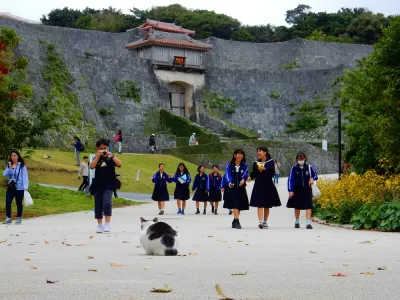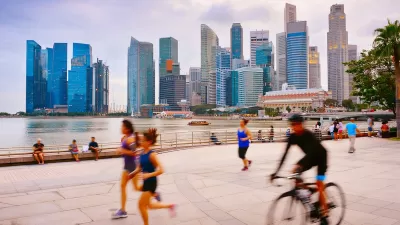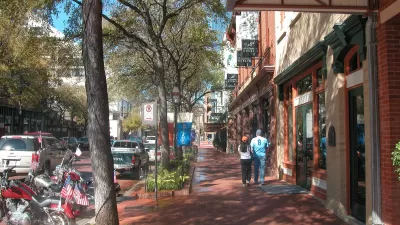Public health outcomes, like long life spans, result from a built environment that encourages movement.

Andrew Merle explains the advocacy action behind Blue Zones, the places in the world where people live the longest. Blue Zones is also the name of an organization that promotes the characteristics of these five places around the world: Okinawa, Japan; Sardinia, Italy; Nicoya, Costa Rica; Ikaria, Greece; and Loma Linda, California.
To get a more complete picture of the Blue Zones concept, and what makes these places so healthy, Merle interviews Dan Buettner, Blue Zones founder and National Geographic fellow. The big idea behind the article, and the entire Blue Zones concept: "in all five Blue Zones, people do not proactively exercise or seek health. Instead, physical activity just happens naturally as a result of their surroundings."
Blue Zones, the organization, is working with U.S. cities to improve bikeability and walkability, but most of the country still has a long way to go to overcome the car-centric planning that has produced a most sedentary populace. In its most recent initiative, Blue Zones, the organization, is partnering with Degree Deodorant to create the Made To Move grant program, which "will provide half a million dollars in funding for city projects that promote increased physical movement."
FULL STORY: FORGET DIET AND EXERCISE—FOR BETTER HEALTH, WE NEED BETTER CITIES

Trump Administration Could Effectively End Housing Voucher Program
Federal officials are eyeing major cuts to the Section 8 program that helps millions of low-income households pay rent.

Planetizen Federal Action Tracker
A weekly monitor of how Trump’s orders and actions are impacting planners and planning in America.

Ken Jennings Launches Transit Web Series
The Jeopardy champ wants you to ride public transit.

Rebuilding Smarter: How LA County Is Guiding Fire-Ravaged Communities Toward Resilience
Los Angeles County is leading a coordinated effort to help fire-impacted communities rebuild with resilience by providing recovery resources, promoting fire-wise design, and aligning reconstruction with broader sustainability and climate goals.

When Borders Blur: Regional Collaboration in Action
As regional challenges outgrow city boundaries, “When Borders Blur” explores how cross-jurisdictional collaboration can drive smarter, more resilient urban planning, sharing real-world lessons from thriving partnerships across North America.

Philadelphia Is Expanding its Network of Roundabouts
Roundabouts are widely shown to decrease traffic speed, reduce congestion, and improve efficiency.
Urban Design for Planners 1: Software Tools
This six-course series explores essential urban design concepts using open source software and equips planners with the tools they need to participate fully in the urban design process.
Planning for Universal Design
Learn the tools for implementing Universal Design in planning regulations.
Ada County Highway District
Clanton & Associates, Inc.
Jessamine County Fiscal Court
Institute for Housing and Urban Development Studies (IHS)
City of Grandview
Harvard GSD Executive Education
Toledo-Lucas County Plan Commissions
Salt Lake City
NYU Wagner Graduate School of Public Service




























